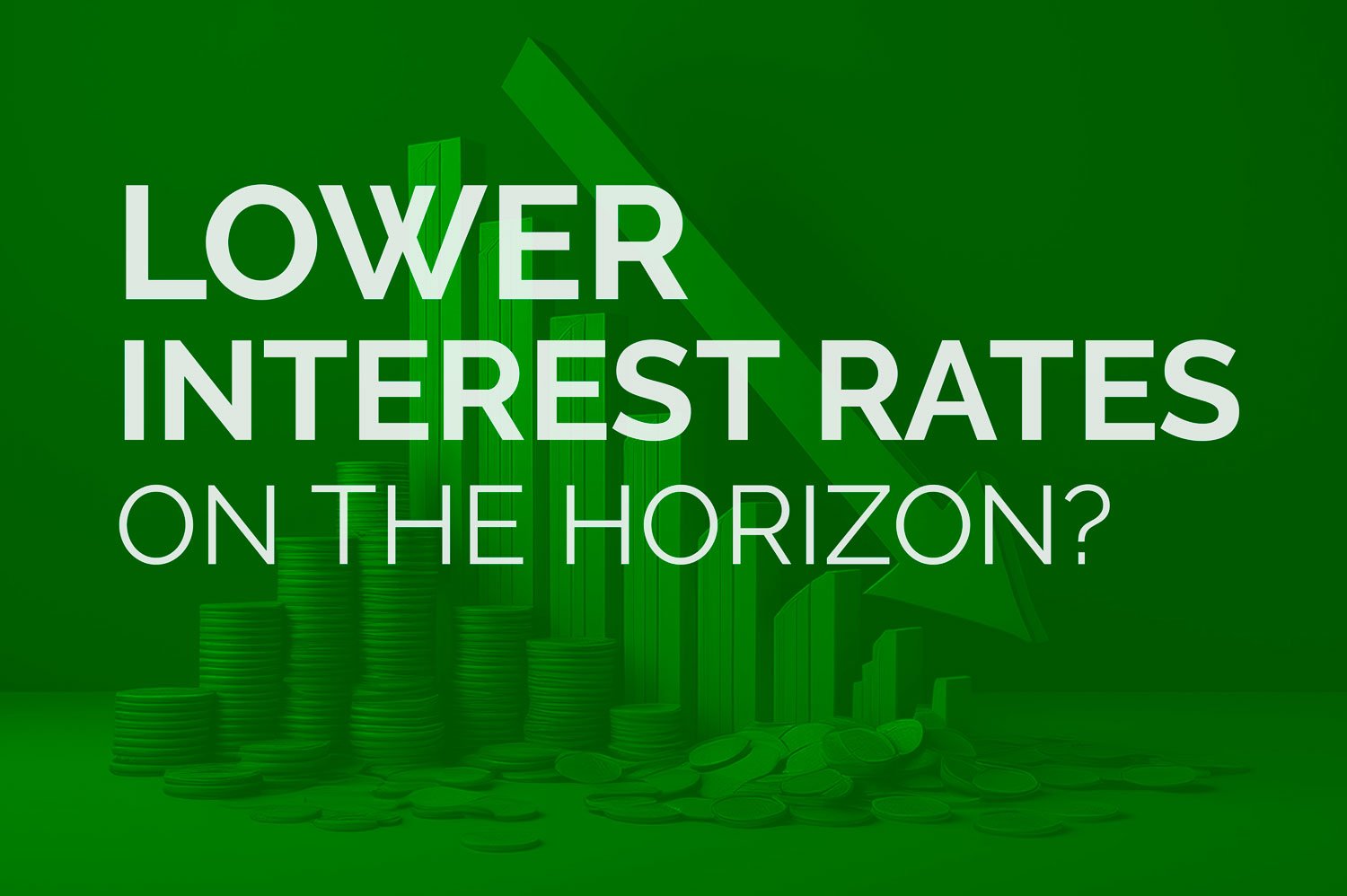The Federal Reserve’s recent actions have left many people pondering the future of interest rates and how these changes could impact their retirement plans. In late July 2024, the Fed unanimously voted to hold rates within a range of 5.25% to 5.5%, marking the highest level in two decades. This decision was driven by the ongoing battle against inflation. However, recent economic indicators suggest that inflation might be softening. If this trend continues, the Fed may consider lowering interest rates to stimulate economic growth.
The possibility of the Federal Reserve reducing interest rates has been a topic of significant discussion. A “vast majority” of Federal Reserve officials indicated that they would likely support a rate cut in September, while several others saw a case for lowering rates as early as the end of July. Ultimately, the Fed’s actions will hinge on how the economy performs leading up to September.
For those nearing or already in retirement, the prospect of lower interest rates can be both a challenge and an opportunity. Lower rates can impact everything from bond yields to savings account returns, and understanding these effects is crucial for maintaining a stable and effective retirement plan. Let’s dive in!
Table of Contents
Understanding Interest Rates
Interest rates are a fundamental aspect of our economy, influencing everything from consumer spending to business investment. At their core, interest rates represent the cost of borrowing money. When you take out a loan, the interest rate determines how much you’ll pay in addition to the principal amount borrowed. Conversely, when you save money in a bank account or invest in bonds, the interest rate dictates the return on your investment.
Interest rates and inflation are closely connected. Typically, when inflation rises, central banks like the Federal Reserve increase interest rates to cool down an overheating economy. Higher interest rates make borrowing more expensive, which can reduce spending and slow inflation. On the other hand, when inflation is low or the economy is sluggish, central banks may lower interest rates to encourage borrowing and spending, which can stimulate economic growth.

But how do these interest rate changes affect your savings and investments, especially in the context of retirement planning? When interest rates drop, the returns on savings accounts, certificates of deposit (CDs), and bonds tend to decline as well. This can have a significant impact on the income you rely on during retirement, particularly if a large portion of your retirement portfolio is allocated to fixed-income investments.
Impact of Lower Interest Rates on Retirement Savings
Lower interest rates can have profound effects on various aspects of your retirement savings, from bond investments to savings accounts and annuities. Let’s explore how each of these elements may be impacted and what strategies you can employ to navigate this environment.
Bond Investments
When interest rates decrease, bond prices typically increase. This inverse relationship occurs because existing bonds with higher interest rates become more valuable compared to new bonds issued at the lower current rates. While this might sound like good news, it also means that the yield on new bonds will be lower, which can reduce the income generated from a bond-heavy portfolio.
For retirees who rely on fixed-income investments, this reduction in yield can be a concern. However, there are strategies you can employ to mitigate the impact:
- Diversify your bond portfolio: Consider investing in a mix of short-term and long-term bonds. Short-term bonds are less sensitive to interest rate changes, while long-term bonds can offer higher yields, balancing the overall risk and return of your portfolio.
- Explore bond ladders: A bond ladder involves purchasing bonds with different maturity dates. As each bond matures, the proceeds can be reinvested into new bonds, potentially at higher rates. This strategy can help maintain a steady income stream.
- Consider bond funds: Bond funds offer diversification by pooling together many bonds. Some bond funds are designed to perform well in a low-interest-rate environment, so exploring these options might be worthwhile.
Savings Accounts and CDs
Lower interest rates can also affect the returns on savings accounts and certificates of deposit (CDs). In a low-interest-rate environment, the interest earned on these traditionally safe savings vehicles can be minimal, barely outpacing inflation.
To enhance the yield on your cash reserves, consider the following alternatives:
- High-yield savings accounts: While traditional savings accounts may offer minimal returns, some online banks and credit unions provide high-yield savings accounts with more competitive interest rates.
- Money market accounts: These accounts often offer higher interest rates than regular savings accounts and can provide a good balance between accessibility and returns.
- Series I savings bonds: These bonds are designed to protect against inflation and offer a fixed rate plus an inflation-adjusted rate. They can be a good option for preserving the purchasing power of your savings in a low-interest-rate environment.
Annuities
Annuities are insurance products that provide a guaranteed income stream, often used by retirees to ensure a steady flow of income. However, lower interest rates can impact the payouts offered by new annuities. When interest rates are low, insurance companies may reduce the amount they can pay out in annuities to ensure they remain profitable.
If you’re considering purchasing an annuity, keep these points in mind:
- Delay purchasing: If possible, consider delaying the purchase of an annuity until interest rates rise. This could result in higher payouts.
- Opt for inflation protection: Some annuities offer inflation-adjusted payments, which can help maintain your purchasing power over time, even if the initial payouts are lower.
- Diversify your income sources: Rather than relying solely on an annuity, consider diversifying your income streams with other investments, such as dividend-paying stocks or real estate, which may offer better returns in a low-interest-rate environment.
Opportunities in a Low-Interest-Rate Environment
While lower interest rates can pose challenges, they also present unique opportunities for savvy investors. By exploring alternative investment options, you can potentially enhance your retirement income and build a more resilient portfolio.
Dividend-Paying Stocks
In a low-interest-rate environment, dividend-paying stocks can become particularly attractive. These stocks offer regular income through dividends, which can provide a stable cash flow in retirement. Moreover, many dividend-paying companies are well-established with strong financials, making them relatively safer investments.
When selecting dividend-paying stocks, consider the following factors:
- Dividend yield: Look for companies with a history of paying and increasing dividends over time. A higher dividend yield can provide a better income stream, but ensure the company has the financial strength to sustain those payments.
- Dividend growth rate: Companies that consistently increase their dividends may offer better long-term income potential, even if their current yield is lower.
- Industry stability: Consider investing in sectors known for stability, such as utilities or consumer staples, which tend to perform well regardless of economic conditions.
Real Estate
Real estate can be another appealing investment option in a low-interest-rate environment. Lower mortgage rates can make it more affordable to invest in property, whether you’re buying a home to live in or rental property to generate income.

Potential benefits of real estate investments include:
- Steady income stream: Rental properties can provide consistent income through rent payments, which can supplement your retirement income.
- Potential for appreciation: Real estate can appreciate over time, offering the potential for capital gains in addition to rental income.
- Inflation hedge: Real estate often acts as a hedge against inflation, as property values and rental income tend to rise with inflation.
However, real estate also comes with risks, such as market fluctuations and the responsibilities of property management. If you’re considering real estate as part of your retirement plan, it might be beneficial to work with a real estate advisor to assess potential opportunities and risks.
Other Investment Options
Beyond dividend-paying stocks and real estate, there are other alternative investment options that can thrive in a low-interest-rate environment. These options can add diversification to your portfolio and offer protection against the challenges of low rates.
Consider exploring the following:
- Commodities: Investing in commodities like gold, silver, or oil can provide a hedge against inflation and economic uncertainty. These assets often perform well when traditional investments falter.
- Precious metals: Precious metals, especially gold, are often viewed as a safe-haven investment during times of economic instability. Their value tends to increase when interest rates are low, making them an attractive addition to a diversified portfolio.
- Real estate investment trusts (REITs): REITs offer exposure to the real estate market without the need to directly purchase property. They provide regular income through dividends and can benefit from rising property values.
Strategies for Navigating a Low-Interest-Rate Environment
In a low-interest-rate environment, careful planning and strategy are essential to ensuring your retirement portfolio remains resilient. By adopting a few key strategies, you can better position yourself to navigate the challenges and seize opportunities presented by lower rates.
Diversification
Diversification is always crucial in investment planning, but it becomes even more important in a low-interest-rate environment. By spreading your investments across various asset classes, you can reduce risk and increase the potential for returns.
Consider the following asset allocation strategies:
- Mix of equities and fixed income: While bonds may offer lower yields in a low-rate environment, they still provide stability. Balancing these with equities, particularly dividend-paying stocks, can create a well-rounded portfolio.
- Global diversification: Don’t limit your investments to domestic markets. Consider international stocks and bonds, which may offer higher yields or growth potential.
- Incorporate alternative investments: As discussed earlier, integrating commodities, real estate, or REITs into your portfolio can provide additional layers of diversification and protection against low interest rates.
Risk Tolerance
Understanding and reassessing your risk tolerance is essential, especially when interest rates are low. Lower interest rates often push investors toward higher-risk investments in search of better returns. However, it’s important not to exceed your risk tolerance, as this could lead to undue stress or significant losses.
To align your investment strategy with your risk tolerance:
- Regularly review your portfolio: Periodically reassess your investments to ensure they still align with your risk tolerance and retirement goals.
- Consider a phased approach: If you’re uncomfortable with the idea of taking on more risk, consider gradually adjusting your portfolio rather than making sudden, large changes.
- Balance risk and return: While seeking higher returns is important, always weigh this against the potential risks, especially as you approach or enter retirement.
Professional Advice
Navigating the complexities of a low-interest-rate environment can be challenging, especially when it comes to retirement planning. Consulting with a financial planner can provide personalized guidance tailored to your specific financial situation and goals.
When seeking professional advice, consider the following:
- Comprehensive planning: A financial planner can help you develop a comprehensive retirement plan that considers all aspects of your financial life, from investments to taxes and estate planning.
- Customized strategies: Every retiree’s situation is unique, and a financial advisor can help you create strategies that align with your individual goals and risk tolerance.
- Regular check-ins: Work with your advisor to regularly review and adjust your retirement plan as needed, especially in response to changing economic conditions or life events.
In Conclusion: With Change Comes Potential
As the prospect of lower interest rates looms on the horizon, it’s crucial to be proactive in your retirement planning. While lower rates can present challenges, they also offer opportunities for those who are prepared to adapt their strategies. By understanding the potential impacts of lower interest rates on your retirement savings, exploring alternative investment options, and employing smart strategies like diversification and risk management, you can navigate this financial landscape with confidence.
Remember, retirement planning is a long-term journey, and it’s essential to stay informed and adaptable as economic conditions evolve. If you’re uncertain about the best approach for your situation, don’t hesitate to seek professional advice. A well-crafted retirement plan can help ensure that you enjoy financial security and peace of mind in your golden years.
Feeling a bit overwhelmed by the effects of lower interest rates on your portfolio? We get it. That’s why we’re here—to make things simpler. Let’s have a quick chat about all things you, your finances and your goals. There’s no pressure, just a friendly conversation with some expert advice.


